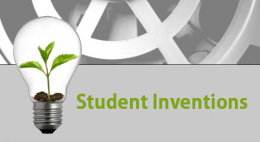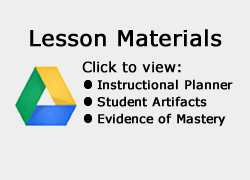This lesson is for : Grade 6:
Summary
In this simulation students become full fledged inventors. Students are tasked with applying insight gained from researching and evaluating inventors and their inventions in order to apply newly gained knowledge to their own design that must solve a real world problem. Students work in teams and practice the creative process by brainstorming, tinkering, and actually creating a working prototype of their invention. Teams of students advertise and market each invention as it will be featured on a website they design. Peer review and feedback will play an integral role at the conclusion of this project, as is evident through daily formative assessments of one another. This formative feedback will focus on commendations as well as areas of improvement.
TIPC Ratings
Research & Information Fluency
Rating: Ideal – Explanation: In the first phase of this unit, students explored the topic inventions by examining and evaluating inventors, obsolete inventions, famous inventions, inventions that impacted society, and a variety of inventions throughout history. Students also researched the process of inventing and answered the essential questions, “What inspires people to invent?” and “What does it take to be an inventor?” During the second phase, students collaborated using the research panel in Google Docs as well as other advanced search options to create questions to investigate problems worth solving. They interviewed people of all ages to discover problems that already exist. Once they gathered a list of worthy problems, teammates analyzed and evaluated to determine which problems might be solved through the creation of a specific invention. Once the group reached a consensus of the type of problem they wanted to tackle, students completed further research in order to see what type of invention already existed so that their ideas would be as unique as possible. Students used a variety of digital tools to research and communicate their findings.
Communication & Collaboration
Rating: Ideal – Explanation: Students worked in teams to select a problem to solve using research questions they designed to find rational answers to those problems. To help organize and streamline class and group discussions, all students documented information on a shared Google doc that allowed for all students to contribute and for the teacher to comment and provide feedback on work shared. Students were able to access this document of brainstormed ideas and progress at any time or any location; school or home. In addition to building their invention, students were tasked with creating a website to advertise the invention. Weebly was one of the website building platform options that allowed for multiple editors on one site. In addition, students evaluated each other each day they worked in class as a team using the Group Work Skills-Collaboration rubric.
This rubric established group norms and expectations for working together in groups. It also allowed them to reflect on how well they contributed and collaboration process.
Students are accustomed to evaluating peers using this rubric by completing a Google form to rate each other.
The final products also allowed students in different classrooms to collaborate and communicate via a blog. Through the use of a Gravity Form, peer comments and a 5 star review system similar to Amazon’s website, students were able to leave productive and visual feedback.
Critical Thinking & Problem Solving
Rating: Ideal – Explanation: This unit has the highest level of critical thinking and problem solving as not only did students have to create the questions to find problems worth solving, they had to analyze which problems have viable solutions. Additionally, students had to brainstorm ideas using a problem solving strategy called SCAMPER to develop an invention that they design and create from scratch.
Creativity & Innovation
Rating: Ideal – Explanation: Students were able to synthesize their existing and self-generated knowledge from researching existing inventions and inventors in order to create an entirely new invention. A major requirement of this project included the fact that their invention could not already exist. This required students to bring in various materials, design multiple prototypes, test the prototypes and apply engineering concepts to create an invention that works in a real world situation. Throughout the design process students constantly reflected on what worked and what didn’t work on the invention prototype in order to apply appropriate re-design. In addition, they continually evaluated their peers using the Group Work rubric to provide feedback on the group’s effort. The creativity and innovation that goes into this hands on endeavor to build an invention is amazing to observe.




